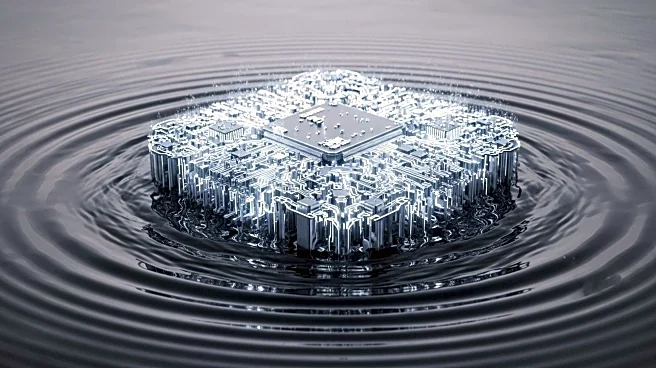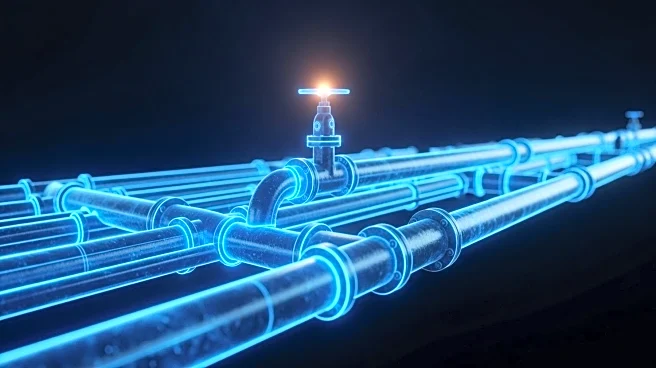What's Happening?
Researchers at the University of Maryland have developed a new type of 3-D printed electronic circuit board that can dissolve in water, offering a sustainable solution for electronic waste recycling. The circuit boards are made using polyvinyl alcohol, a polymer that dissolves in water, and a gallium-indium metal alloy for wiring. Once the boards are exposed to warm water, they dissolve, allowing for easy recycling of components and materials. This innovation addresses the significant issue of electronic waste, particularly circuit boards, which are often difficult to recycle. According to a United Nations report, Asian countries generate approximately 600,000 tons of used circuit boards annually, with less than 20% being recycled. In contrast, the EU and North America recycle 61% and 44% of their circuit board waste, respectively. The development of these dissolvable circuit boards could significantly improve recycling rates and reduce environmental impact.
Why It's Important?
The introduction of dissolvable 3-D printed electronics represents a significant advancement in sustainable technology, potentially reducing the environmental impact of electronic waste. Circuit boards are a major component of electronic waste, and their recycling is crucial for reducing landfill and pollution. The ability to dissolve and recycle these boards easily could lead to higher recycling rates and less environmental damage. This innovation is particularly important given the large volume of electronic waste generated globally, with Asia producing the most significant amount. By improving recycling methods, this technology could help mitigate the negative effects of electronic waste on the environment, promoting a more sustainable approach to electronics manufacturing and disposal.
What's Next?
The next steps for this technology could involve scaling up production and testing the dissolvable circuit boards in more complex electronic devices. Researchers may also explore partnerships with electronics manufacturers to integrate this technology into commercial products. Additionally, regulatory bodies might consider updating recycling standards to accommodate these new materials, encouraging wider adoption. As the technology gains traction, it could lead to increased investment in sustainable electronics and inspire further innovations in environmentally friendly materials.
Beyond the Headlines
This development could have broader implications for the electronics industry, potentially leading to a shift towards more sustainable manufacturing practices. The use of dissolvable materials in electronics could reduce the need for hazardous chemicals in production and disposal, aligning with global efforts to reduce environmental impact. Furthermore, this innovation might influence consumer behavior, encouraging the purchase of electronics with sustainable components. It could also spark discussions on the ethical responsibility of manufacturers to address electronic waste and promote sustainability.












